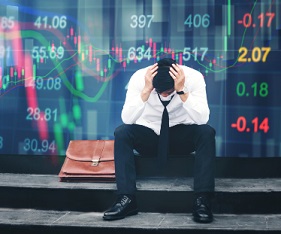Reuters: Ten Years After Lehman, Spotting the Next Crisis

Article by Jamie McGeever on Reuters
As financial market participants reflect on the 10th anniversary of Lehman Brothers’ collapse, the consensus is, there will be no repeat of the near-death experience, largely because authorities simply will not allow it.
The once-in-a-generation financial meltdown and economic catastrophe was so grave that, to borrow from ECB chief Mario Draghi, they will do whatever it takes to make sure it does not happen again. Painful lessons have been learned.
But the idea that a financial crisis on the scale of a decade ago could not happen again is far fetched, and not a little naive. In fact, many of the roots of the blow-up 10 years ago are still alive and well today.
All we can say with some degree of certainty is that the next crash will probably germinate in a different corner of the financial ecosystem before spreading. Familiar warning signs may flash, but what triggers one crisis may not trigger another.
Financial crashes usually result from one or more of the following: high debt and leverage, across household or corporate sectors; increased risk taking; excessive investor complacency, greed and exuberance fuelled by low volatility; rising interest rates; lower corporate profits.
There are signs that, to varying degrees, these conditions are in place today. Debt levels are higher now than before the Great Financial Crisis. According to McKinsey, total global debt rose to $169 trillion last year from $97 trillion in 2007.
Leverage in the banking system is lower now, but a decade of near zero interest rates and ultra-low volatility has fuelled speculation and risk-taking across the financial ecosystem. Remember, it was barely a year ago that Argentina launched a 100-year bond to much fanfare.
With interest rates so low, central bank balance sheets so big and national debt levels so high, policymakers may be running low on crisis-fighting ammunition.
Central banks now have a permanent presence in financial markets, and it is highly unlikely they will return interest rates or their balance sheets to pre-crisis “normal” levels.
Japan’s experience of extraordinary measures including QE and zero interest rates, and subdued growth rates over the last 20 years is a useful guide to what we can expect across the developed world.
“KNOWN UNKNOWNS”
There are also fresh market risks. They include a corporate bond blow up in China; an emerging market crash sparked by rising U.S. rates and dollar; U.S. corporate profits diving; euro zone break-up; a global trade war; a plunge in oil prices; a sharp rise in inflation.
Rightly or wrongly, investors are simply hoping for the best. If the euro zone avoided Grexit and impending collapse in 2012, it will surely do so again, right? And no one in the White House really wants a full-blown global trade war, do they?
Maybe. But maybe not.
To read this article on Reuters in its entirety, click here